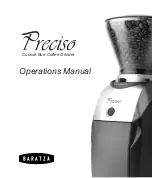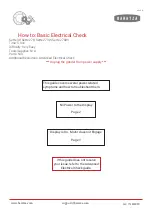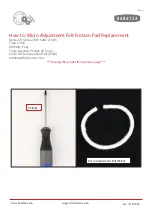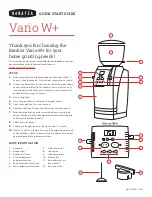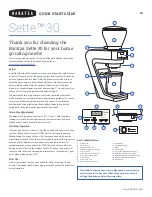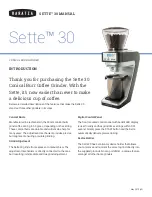
EN
43
footing and good balance. This will ensure
you have better control over the tool in
unexpected situations.
• Wear suitable clothing. Do not wear
loose-fitting clothing or jewellery. Keep
your hair, clothing and gloves away from
moving parts. Loose-fitting clothing,
jewellery and long hair can get caught in
moving parts.
• If dust extraction and dust collection
equipment is available, this should be
connected and used correctly. The use of
such devices can reduce the risk of
dust-related problems.
USING AND LOOKING AFTER
POWER TOOLS
• Do not force the power tool. Use the
correct power tool for the planned work.
The tool does the job better and safer
when used at the rate for which it was
designed.
• Do not use the tool if it cannot be
switched on and off with the power
switch. Power tools that cannot be
controlled with the power switch are
dangerous and must be repaired.
• Unplug the power cord before making any
adjustments, changing accessories or
putting the power tool away. These safety
precautions reduce the risk of accidently
starting the power tool.
• Store power tools out of the reach of
children when not in use. Never allow
children, or anyone who is unfamiliar with
the power tool and these instructions, to
use the tool. Power tools are dangerous if
used by inexperienced persons.
• Keep power tools properly maintained.
Check that moving parts are properly
adjusted and do not jam, and that no
parts are incorrectly fitted or damaged.
Check for other factors that could affect
functionality. If the power tool is
damaged, it must be repaired before
being used again. Many accidents are
caused by poorly maintained power tools.
• Keep cutting tools sharp and clean.
Properly maintained cutting tools with
sharp cutting edges are less likely to jam
and are easier to control.
• Use the power tool, accessories and bits
etc., in accordance with these instructions,
taking into account the actual working
conditions and the work that is to be
done. It can be dangerous to use power
tools for purposes other than those they
are intended to be used for.
USING AND MAINTAINING BATTERY-
POWERED TOOLS
• Only charge the battery with the charger
recommended by the manufacturer.
Charging other batteries can result in a
risk of personal injury and/or fire.
• Only use batteries recommended by the
manufacturer. The use of other batteries
can result in a risk of personal injury and/
or fire.
• When the battery is not in use keep it
away from metal objects such as
paperclips, coins, keys, nails, screws and
other small metal objects that can short
circuit the terminals. Short circuiting
discharges large amounts of energy that
can cause a fire and/or burn injuries.
• Failure to handle the battery carefully can
cause fluid to leak from the battery. Avoid
contact with battery fluid. On contact with
battery fluid, rinse immediately with
plenty of fresh water. Seek medical
attention if you get battery fluid in your
eyes. Battery fluid can cause skin irritation
and/or burns.
SERVICE
The power tool must only be serviced by
qualified personnel using identical spare parts.
This will ensure that the power tool remains
safe to use.
Содержание 019801
Страница 4: ...1 1 2 3 4 5 6 7 8 9 12 13 11 10 ...
Страница 5: ...2 4 6 3 5 ...
Страница 6: ...8 10 12 9 11 7 ...
Страница 7: ...14 16 15 13 ...































